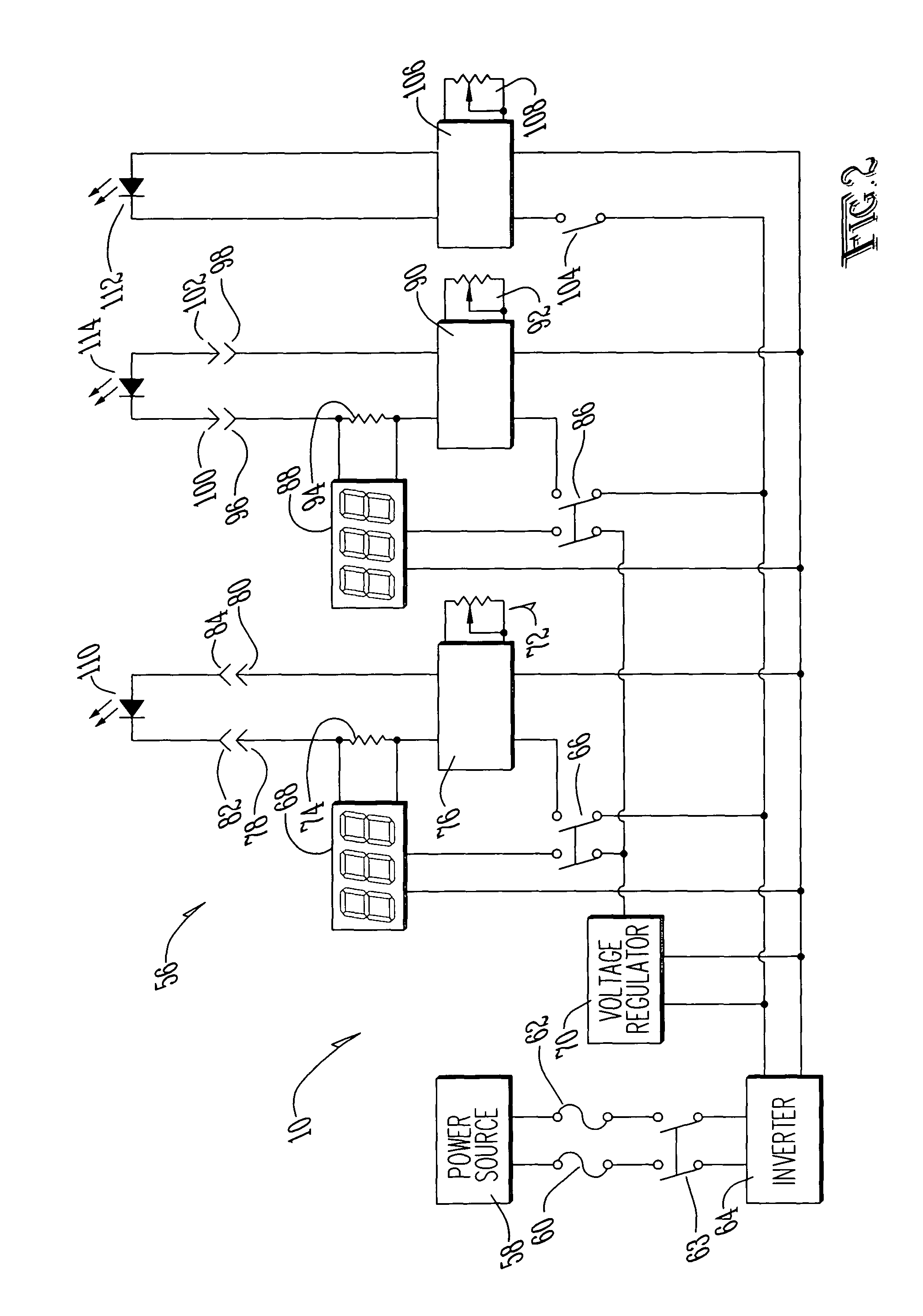Light reflex testing device
a light reflex and testing device technology, applied in the field of colorimetric pupil light reflex testing devices, can solve the problems of difficult to find in usable sizes, ambiguous or even incorrect diagnosis, and limited ocular abnormality diagnosis based on pupil light reflexes
- Summary
- Abstract
- Description
- Claims
- Application Information
AI Technical Summary
Benefits of technology
Problems solved by technology
Method used
Image
Examples
Embodiment Construction
[0036]With reference to the drawings, a colorimetric pupil light reflect testing device is shown generally as (10) in FIG. 1. The device (10) includes a housing (12) which may be constructed of plastic or any suitable material. The housing (12) and all of its internal components preferably weighs less than 10 kilograms and, more preferably less than 5 kilograms. The device (10) includes three rocker switches (14), (15) and (16) which may be of any suitable on / off type known in the art. Provided on the face (18) of the housing (12) are two three and a half digit liquid crystal display (LCD) / voltmeters (20) and (22). The displays may alternatively be light emitting diode displays or any other desired type of display. Provided below the displays (20) and (22) are two potentiometer knobs, (24) and (26).
[0037]Also provided on the housing (12) are two outputs (36) and (38), coupled to a pair of jacks (40) and (42). The jacks (40) and (42) are coupled by power conduits (44) and (46) to a p...
PUM
 Login to View More
Login to View More Abstract
Description
Claims
Application Information
 Login to View More
Login to View More - R&D
- Intellectual Property
- Life Sciences
- Materials
- Tech Scout
- Unparalleled Data Quality
- Higher Quality Content
- 60% Fewer Hallucinations
Browse by: Latest US Patents, China's latest patents, Technical Efficacy Thesaurus, Application Domain, Technology Topic, Popular Technical Reports.
© 2025 PatSnap. All rights reserved.Legal|Privacy policy|Modern Slavery Act Transparency Statement|Sitemap|About US| Contact US: help@patsnap.com



